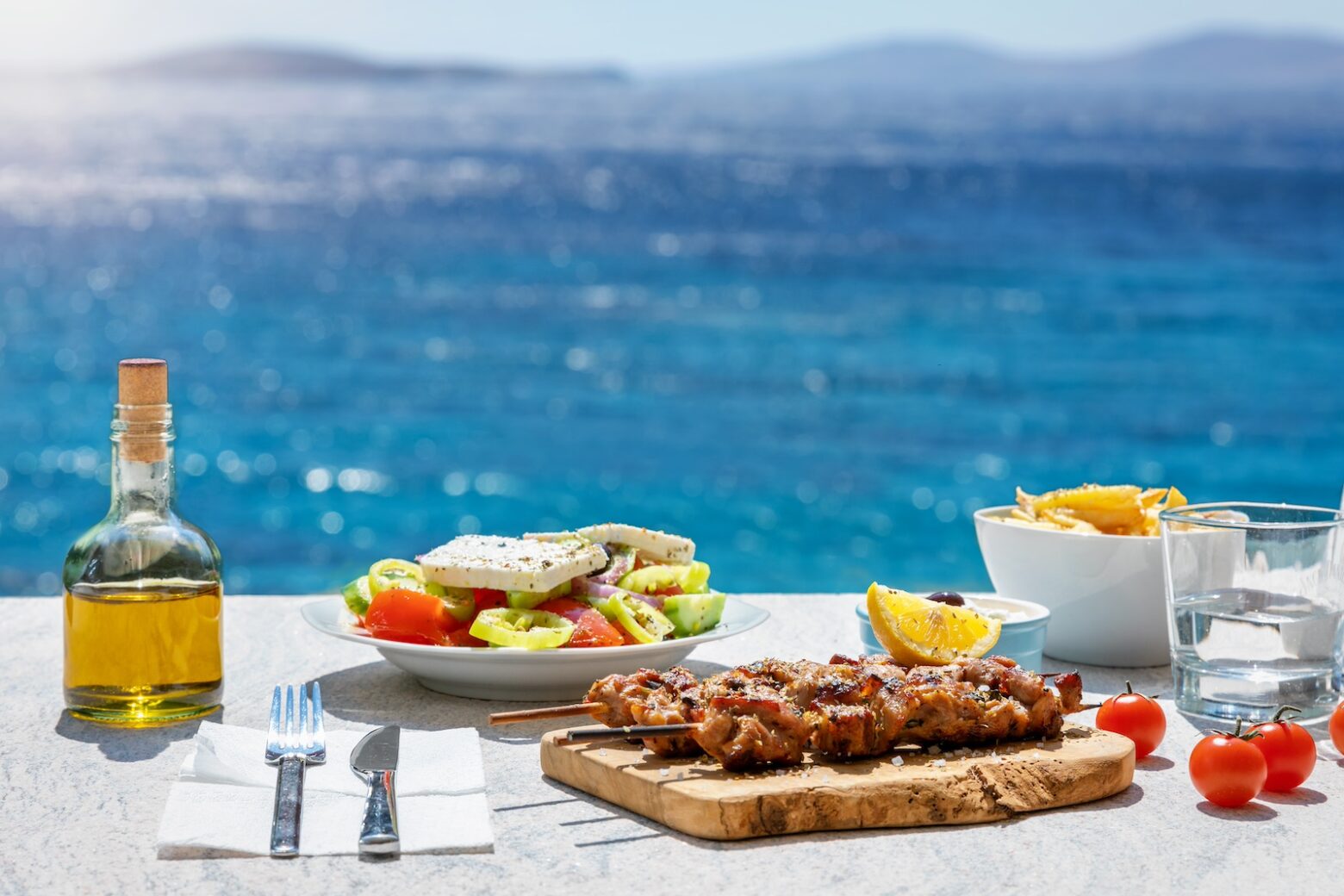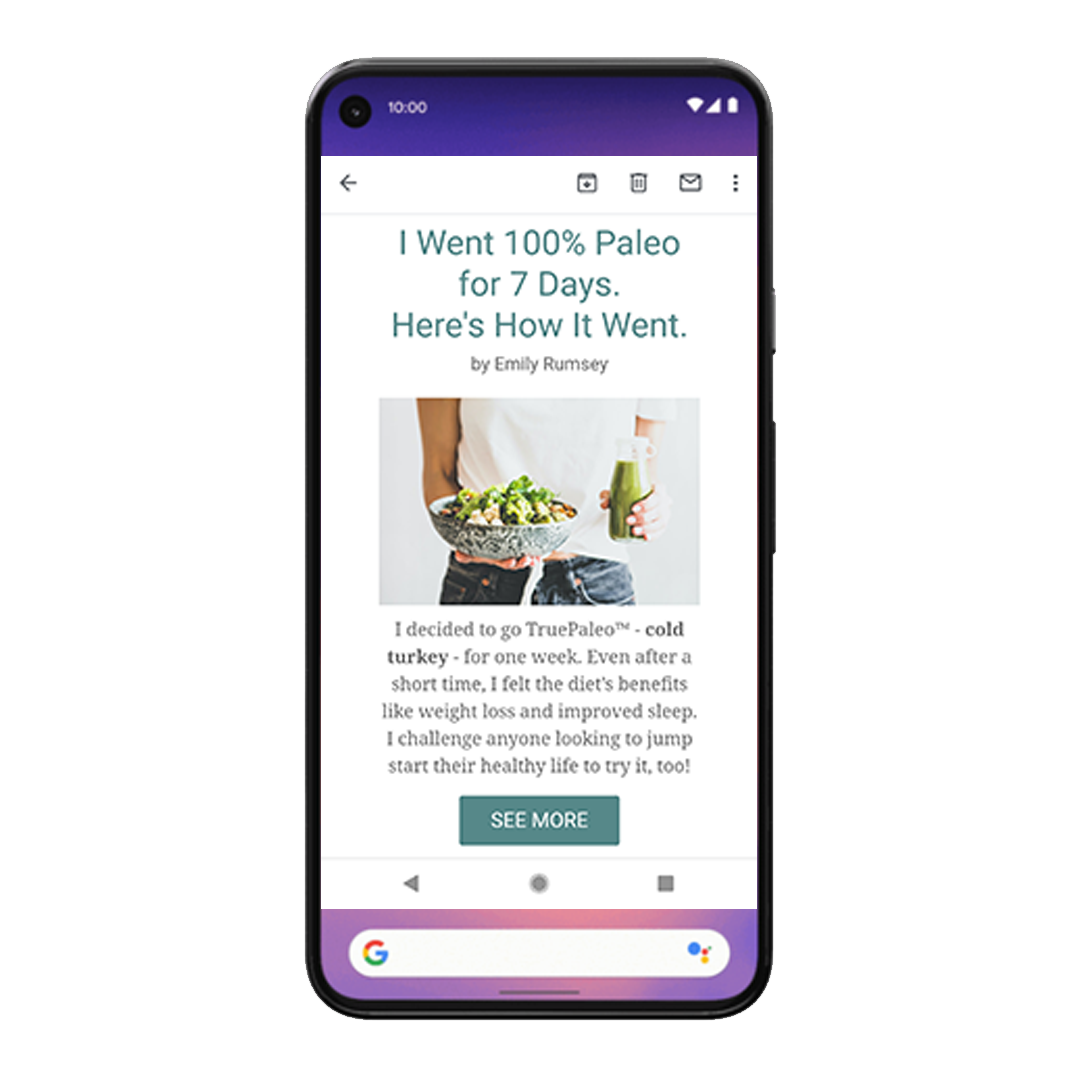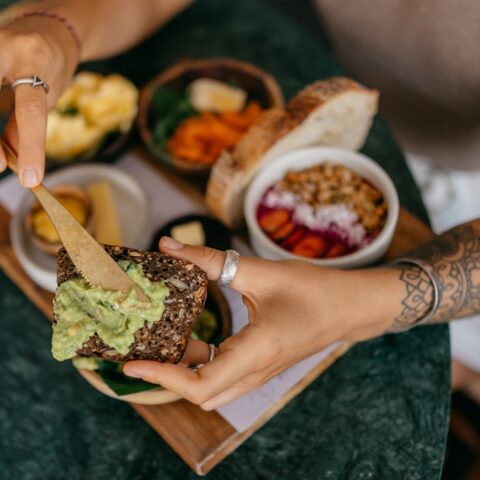The Mediterranean Diet vs. The Paleo Diet: Which Should You Follow?

Just about everyone has heard of the Mediterranean diet and how healthy it is for you. Who can argue with fish, olive oil, and vegetables, after all? The Mediterranean diet has been the go-to anti-inflammatory, heart-healthy diet for decades. It’s also one of the three recommended diets in the 2020-2025 Dietary Guidelines for Americans. [1]
While The Paleo Diet® is hardly a newcomer on the scene, you might be wondering which is better to follow for your health. Let’s look at what each diet brings to the table and any health considerations that might make someone choose one over the other.
What Is the Mediterranean Diet?
The Mediterranean diet is inspired by the foods and dining habits of certain countries that border the Mediterranean Sea. Specifically, it was modeled after foods typically eaten on the island of Crete, much of mainland Greece, and the southern region of Italy back in the 1950s and ’60s, based on a few epidemiological studies being done at that time.
Researchers noticed some dietary patterns and lifestyle themes that were common to those regions. The people in those areas stayed healthy and active into old age. They also had some of the lowest rates of diseases that plagued Western societies; particularly obesity, heart disease, cancer, and other chronic health conditions.
At that time, people living in those areas were eating primarily plant-based diets, supplemented with cheese, yogurt, and small amounts of fish and poultry. Eggs were kept to a minimum, as was red meat. Olive oil was the main source of fat, with fresh fruit serving as a dessert. Wine often accompanied meals, but in low to moderate amounts. [2]
While the diet was based on eating patterns followed by scientists in the ’50s and ’60s, it wasn’t until 1975 that American scientist Ancel Keys stepped into the limelight and began promoting it. That was after he had completed his infamous Seven Countries Study in 1970, which reinforced a Mediterranean-style diet as an overall healthy diet for reducing cardiovascular disease and all-cause mortality. [3]
Then, in the 1990s, it was popularized by scientists at the Harvard University School of Public Health, who laid out the modern version of what we now know as the Mediterranean diet in their Mediterranean Diet Pyramid. [2] Since that time, the Mediterranean diet has been promoted through books, doctors, and media of all kinds; and remains popular today.
The Mediterranean Diet vs. The Paleo Diet
Compared to The Paleo Diet, the Mediterranean diet is much more lenient in the food groups it allows. Not only does it allow beans and legumes, but it emphasizes them as a good source of protein and fiber. It also includes unprocessed whole grains like wheat, rye, and oats.
Contrary to the dairy-free emphasis of The Paleo Diet, the Mediterranean diet allows a variety of dairy products as well, including milk, cheese, and yogurt from cows, goats, and sheep. However, it does limit red meat and eggs, presumably due to their higher saturated fat content. Instead, the Mediterranean diet encourages the use of foods rich in unsaturated fatty acids, like fish and olive oil.
The modern version of the Mediterranean diet has focused much more on the inclusion of alcohol in the form of wine than past versions. In fact, most people would assume they’re not following a true Mediterranean diet without frequently indulging in vino. The Paleo Diet, on the other hand, recommends avoiding or limiting alcohol.
Which Is Healthier to Follow?
Both the Mediterranean diet and The Paleo Diet promote eating plenty of vegetables, fruits, and healthy fats. Either one is an excellent improvement to a processed Western diet. However, The Paleo Diet focuses on foods our bodies have evolved to eat, and avoids irritating substances naturally found in certain plants and animal-derived products.
The Mediterranean diet still allows gluten-rich grains, high-lectin foods like legumes, glycoalkaloid-rich potatoes, and inflammatory substances like A1 beta-casein in modern cow’s milk. You could even still be eating genetically engineered crops or rBST/rBGH in yogurt and cheese. The Mediterranean diet also doesn’t limit the use of salt, which can contribute to many types of chronic disease.
The Paleo Diet eliminates all grains, legumes, dairy, and added salt, reducing worries of having highly immune-irritating foods in the diet. Research backs the anti-inflammatory and longevity-promoting effects of The Paleo Diet, too: A large meta-analysis published in 2022 concluded that The Paleo Diet was best overall for improving markers of chronic disease. [4]
A Mediterranean Diet for the Short Term
For those wanting to make some major improvements to their diet but not yet prepared to eliminate entire food groups, the Mediterranean diet might be a better place to start. But that’s just it. It may be a good starting point on the way to following The Paleo Diet.
After all, transitioning from a Mediterranean diet to The Paleo Diet really isn’t that difficult once a person has gotten used to a higher quality diet that focuses on whole foods.
Potential Downsides of the Mediterranean Diet
There are several potential downsides to going only as far as a Mediterranean diet and not making the full shift to Paleo. One of those downsides is the high volume of antinutrients still allowed on the diet. Gluten—found in wheat, barley, rye, and some oat cultivars—is just one of them. The gliadin component of gluten can break down the gut lining, setting the stage for autoimmune disease.
Lectins, another group of antinutrients, are also a big drawback to following the Mediterranean diet. Beans, lentils, peas, peanuts, and other legumes allowed on this diet have high concentrations of lectins. These plant toxins are known to enter the bloodstream and cause inflammation, dysfunction, and disease. They’re linked to chronic pain, autoimmune conditions, and more.
Phytates—present in legumes, grains, and pseudo-cereals—are plant toxins that can bind to key minerals in food, limiting their absorption. So while you think you’re eating a nutrient-dense diet, these foods can reduce your absorption of vital minerals, like zinc. [5]
Why Paleo Is Better for the Long Haul
The Mediterranean diet is loose and ambiguous enough that a person might find themselves cheating with a little more than recommended amounts of bread, sweets, and alcohol over time. The Paleo Diet, on the other hand, paints a clear picture: eat as closely as possible to what our ancestors would have eaten, and you’ll stay on the right track.
Even eating Paleo 85% of the time will massively limit the disease-causing antinutrients you consume over a lifetime. In doing so, you’ll reduce your risk of developing chronic diseases as you age. Committing to a mostly Paleo diet can help lower your overall inflammation and help you age gracefully. Knowing these benefits, you’ll find it much easier to stick with this diet as a sustainable lifestyle.
References
- U.S. Department of Agriculture and U.S. Department of Health and Human Services. Dietary Guidelines for Americans, 2020-2025. 9th Edition. December 2020. Available at DietaryGuidelines.gov.
- Willett WC, Sacks F, Trichopoulou A, et al. Mediterranean diet pyramid: a cultural model for healthy eating. Am J Clin Nutr. 1995;61(6 Suppl):1402S-1406S. doi:10.1093/ajcn/61.6.1402S
- Kimura N, Keys A. Coronary heart disease in seven countries. X. Rural southern Japan. Circulation. 1970;41(4 Suppl):I101-I112.
- Liang S, Mijatovic J, Li A, et al. Dietary Patterns and Non-Communicable Disease Biomarkers: A Network Meta-Analysis and Nutritional Geometry Approach. Nutrients. 2022;15(1):76. Published 2022 Dec 23. doi:10.3390/nu15010076
- Couzy F, Mansourian R, Labate A, Guinchard S, Montagne DH, Dirren H. Effect of dietary phytic acid on zinc absorption in the healthy elderly, as assessed by serum concentration curve tests. Br J Nutr. 1998;80(2):177-182.
Betsy Schroeder
Betsy does research and writing for a few different websites in the natural health field after taking Masters level courses in Nutrition & Functional Medicine through the University of Western States.
More About The Author




